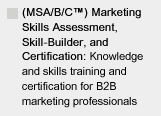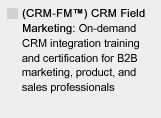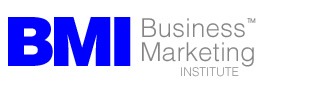MAKE SURE YOU CONTINUE TO RECEIVE EACH ISSUE OF TUESDAY MARKETING NOTES—CLICK HERE TO RENEW YOUR FREE SUBSCRIPTION (IF YOU'VE ALREADY SUBSCRIBED, NO NEED TO RE-SUBSCRIBE)

Does Social Media Spread or Control Negative Opinion? Some Surprising Answers
by Michael F. Kelly
Listening to communications professionals, you’ll often find that beneath the surface they’re in fear of social media because they feel it primarily spreads negative opinion. Does it? May social media also be used to control negative market opinion?
Social media in the form of word-of-mouth has been around since people began buying and trading. It was used as much for spreading the word on new products and services as it was about quality and trustworthiness. This has worked for thousands of years. It’s used to spread innovations as covered in Everett Rogers’ Diffusion of Innovation. We can call this: "Yesterday’s Social Media."
Tomorrow’s Social Media
Technology now powers social media and it’s rapidly opening new possibilities for buyers and sellers. Today, we have a Grand Social Media Experiment among buyers, users and sellers to discover what Tomorrow’s Social Media can and should do for them; to decide what needs new communication and social media can fulfill and how. We are transitioning from Yesterday’s to Tomorrow’s Social Media and figuring out how it will be used. Sellers are pushing to evolve social media to influence what others think of them (i.e. their reputation) and buyers are pushing it to gain authentic information and control. But there is a problem . . .
Over the past 75 years, social media evolved as the means for communicating negative opinion and experiences. Social media is the way members of a group with some common interest, your customers and potential customers for example, find and communicate with each other for the furtherance of the group’s goals. "Social" should be the media equally of positive and negative opinion but has instead become primarily used for transmitting negative opinion. What caused this?
Sellers did, aided by communications professionals who widely adopted the practice and cooperated with managements’ direction to put the best foot forward when promoting the brand rather than the complete story buyers need to make a decision. The full story for example, includes the negative, the limitations, when the product doesn’t work as promoted or the sales claim is inaccurate or the full functionality is not present. Classic mass media evolved into the world of claims, hopes and promises; the intention, not the actual. This left yesterday’s social media, as the media for "the rest of the story" which was mostly negative opinion and stories of negative experiences.
While communications professionals were all happily practicing one-way mass communication and patting each other on the back for exceeding various inwardly-focused performance goals, customers and prospects were finding new ways of making social media more effective and efficient to get the rest of the information they needed to make decisions. They ignored the marketers for getting the whole story. They reverted to talking to each other and comparing actual experiences vs. what was promised, often finding that what a brand delivered (product, service, support) wasn’t as promised or expected. Communications professionals built on the human tendency to put one’s best foot forward, to tell the best story and worked it into a fine art (such as big print/small print). This was compounded by businesses’ notable inattention to customers; feedback as to whether it actually worked as claimed.
The Real World
Customer experience, the source of what actually worked or not, was summarized by customers into opinions and stories, passed along by-word-of-mouth (AKA social media). This is the way it’s always been. Prospects and other customers have always been very interested in the actual experience of prior customers in all its detail and emotion so they had a more complete picture about what to really expect from products or services.
A Separate Reality
Sellers, on the other hand, have always wanted to talk only about the positives, to attract now and address problems later. Marketing was assigned the job of "just finding and attracting prospects," Sales was assigned the job of "just converting the prospects to customers and someone else would do the rest. The result is separate silos delivering a series of services to the prospect with each one being told to "just do this." The result is customers suffering disjointed experiences caused by the internally focused seller and so they turn to each other for more information about what to buy and how to use it.
Traditional mass media communications is about "what information vendors want to talk about." This too often takes the form of claims and promises, yet to be proven. Social media and interpersonal communication became the media for information that vendors would rather not talk about. While it wasn’t always efficient, it was effective.
Is Social Media a Way of Controlling Negative Opinion?
Yes, But Probably Not the Way You Think, for Two Key Reasons
First, trying to control negative opinion in the market by talking to a few upset customers online is not effective when perhaps thousands customers have experienced the same problem. Remember, customers complaining via social media are only a sample of customer thinking. Fixing a few in the sample does not affect the thousands with the problem.
Secondly, talking to the sample over social media is an opportunity for learning about the problems and experimenting with solutions. Repeating, social media is in the midst of a Grand Experiment. It is a new tool for organizations to learn about negative opinion, what may work to overcome it and how to pay attention and solve that problem for those affected.
An example: If an offer was sent out with small print that took away much of the value promised in the big print, (yes, this still happens!) it’s very likely that some customers will have a negative reaction to some consequences because they weren’t aware of the small print. Some of them will apply social media to complain and or warn others. As a marketer, don’t think you have taken care of the problem if you handle only the few who complained. You must convey the findings back into the organization that then must decide how to fix the problem for all customers.
Conclusion
Social media is not a new way to do old things. The biggest challenge for most organizations is accepting the need to do new things while at the same time learning what those new things may be even as they are developing.
The biggest challenge to accept is that today you have to change as a professional and organizations have to change their culture. During the Grand Experiment, you may have feelings around loss of control (even though real control was an illusion) and other risks. Invest in listening to your market, without any agenda except to really learn from it.
Negative opinion is the market’s attempt to control you, to stop your behavior leading to their negative opinion. That’s the secret to controlling negative opinion: it’s not what you do to the market that controls it, it’s what they do to your organization. It’s the organization that has to be controlled to stop actions that cause negative opinion. Listen, learn and adapt.
Michael F. Kelly (mkelly@techtel.com) is CEO of Emeryville, California-based market research and strategy company,Techtel (http://www.techtel.com) and senior fellow of the Society of New Communications Research








